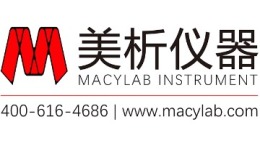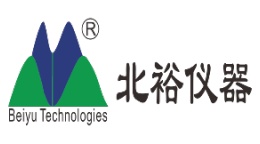方案详情文
智能文字提取功能测试中
Nitrate inSurface Fresh Water 3P.lace the electrode and stirrer into the beaker with the 1 ppm standard with the electrode tip fullyimmersed in the solution. The stirrer should be positioned slightly below the tip of the electrode. Press the STIRRER key on the meter to turn the stirrer on. Press the CALIBRATE key. 4.Wait for a stable reading (1-2 minutes). Enter standard value of“1.0”using UP and DOWN arrowkeys and the DECIMAL/DIGIT key. 5.Press the CALIBRATE key to accept the 1.0 ppm standard and press the STIRRER key toturn the stirrer off. 6. 1Rinse electrode and stirrer thoroughly with deionized water. Gently remove excess solution from theouter sleeve of the electrode by dabbing with a clean paper tissue. Do not wipe or rub the sensingelement of the electrode. 7.Place the probe and stirrer into the beaker with the 10 ppm standard with the electrode tip fullyimmersed in the solution. The stirrer should be positioned slightly below the tip of the electrode.Press the STIRRER key on the meter to turn the stirrer on. 8.Wait for stable reading (1-2 minutes). Enter standard value of“10”using UP and DOWN arrow keysand the DECIMAL/DIGIT key. 9P.ress the CALIBRATE key to accept the 10 ppm standard and press the STIRRER key to turn thestirrer off. 10. Rinse electrode, and stirrer thoroughly with deionized water. Gently remove excess solution from theouter sleeve of the electrode. 11. Place the probe and stirrer into the beaker with the 100 ppm standard with the electrode tip fullyimmersed in the solution. The stirrer should be positioned slightly below the tip of the electrode.Press the STIRRER key on the meter to turn the stirrer on. 12. Wait for stable reading (1-2minutes). Enter standard value of “100"using UP and DOWN arrowkeys and the DECIMAL/DIGIT key. 13. Press the MEASURE key to accept the 100 ppm standard and to move to the measure mode of themeter. Press the STIRRER key to turn the stirrer off. 14. Rinse electrode and stirrer thoroughly with deionized water. Gently remove excess solution from theouter sleeve of the electrode by dabbing with a clean paper tissue. Do not wipe or rub the sensingelement of the electrode. 15. Place the probe and stirrer in a prepared sample with the electrode tip fully immersed in the solution.Press the MEASURE key on the meter; the stirrer will turn on. The ISE: mg/L icon will flash as themeasurement is being made. The ISE:mg/L icon will become solid and the display value will freezewhen a stable reading is achieved. This value is logged and printed automatically and the stirrer turnsoff automatically. 16. Repeat steps 14 and 15 for additional samples. Remember to rinse the electrodes with deionized waterbetween measurements. Penetrate each sample to the same depth to reproduce sample measurement.Upon completion of samples, rinse the electrode with deionized water and store the electrodeaccording to instructions in the Electrode Storage section of this method note. Nitrate inSurface Fresh Water Introduction The direct measurement of nitrate concentration by ion selective electrode has been approved by theEPA for use in NIPDWR compliance monitoring in potable waters. There are no turbidity or colorinterferences. The method requires very little time - only one or two minutes per sample. Species presentin samples which can interfere with the measurement are minimized by use of an interference suppressantsolution, which is mixed with the sample before measurement. The Orion 9707 ionplus° nitrateelectrode measures nitrate in aqueous solution simply, accurately and economically using its Sure-Flow"combination reference design. Recommended Equipment Cat.No. Nitrate Application Package (includes all items with a catalog no) 1010126 1. 4-Star benchtop pH/ISE meter 1115000 2. Orion ionplus° nitrate electrode 9707BNWP 4. Orion benchtop stirrer (or magnetic stir plate and bar) 096019 5. Orion benchtop electrode stand 1110001 5. Beakers (150 mL) 7. Graduated cylinder (150 mL) 8Pipettes (10mL) .Volumetric flasks (100 mL) Required Solutions Cat. No. 1. Nitrate standard,100 ppm as N 930707 2. ISA (Ionic Strength Adjuster) for nitrate electrode 930711 3. Reference filling solution, Optimum Results"F 900046 4. Nitrate electrode interference suppressor 930710 5. Deionized water Calibration Standard Preparation 1. Using a graduated cylinder, transfer 100 mL of the 100 ppm standard into a beaker, add 2 mL of theISA for nitrate electrode. 2.Prepare a 10 ppm nitrate standard by pipetting 10 mL of the 100 ppm nitrate standard into a 100 mLvolumetric flask. Add 2 mL ISA. Dilute to the mark with deionized water. Mix well. 3. Prepare a 1 ppm nitrate standard by pipetting 10 mL of the 10 ppm nitrate standard into a 100 mL volumetric flask. Add 2 mL ISA. Dilute to the mark with deionized water. Mix well. Nitrate inSurface Fresh Water Sample Preparation 1. Using a graduated cylinder, measure 100 mL of the sample into a beaker. Add 2 mL of the ISAfor nitrate electrode. 2. Repeat for additional measurements. Results Five samples of surface fresh water were collected and measured for nitrate. The data demonstrated that thenitrate concentration was less than 1.0 ppm. ppm Nitrate Sample #1: < 1.0 Sample #2: <1.0 Sample #3: <1.0 Sample # 4: <1.0 Sample #5: <1.0 Electrode Storage For brief storage periods between sample measurements, store the electrode in nitrate standard, such as 100ppm as N. The filling solution in the nitrate electrode should not be allowed to evaporate and crystallizearound the junction. For longer storage periods, drain the reference compartment of the electrode and flush itwith deionized water. Disassemble the electrode as described in the electrode instruction manual. Equipment Setup Electrode Setup-ionplus electrode 1. Remove the electrode sensing module from the plastic vial package. Make sure both o-rings are in place onthe sensing module. Remove the electrode handle from the box. 2. G(rasp the outer sleeve of the electrode handle .w.i.th the fill hole end toward the electrode cap, and gentlypush the electrode inner stem through the outer sleeve. 5.Slide the outer sleeve, spring, and cap down the electrode cable until the outer sleeve is beyondthe inner stem. 士.With one hand, grasp the middle of the inner stem without touching the reference pellet. With the otherhand, screw the sensing module onto the stem until it stops and the sensing module is flush against thestem. Then tighten an additional one-quarter turn and stop. Do not over tighten. The sensing moduleshould be firmly attached to the inner stem. 5.H1olding the electrode cable, slide the outer sleeve, spring and cap over the inner stem. 6 With one hand grasp the outer sleeve; do not touch the sensing membrane. With the other hand, pull onthe cable and gently screw the cap onto the inner stem. Stop when resistance is felt. Do not over tightenor continue to turn the cap, the cap will not completely stop. If the inner body turns at all, the cap is tootight and removal of the cap and reassembly is necessary. 7. Lift the filling solution bottle's spout to a vertical position. 8. Insert the spout into the filling hole in the outer sleeve of the electrode and add a small amount of fillingsolution to the chamber. Then tip the electrode to moisten the o-ring at the top and return electrode to avertical position. 9 Holding the electrode by the barrel with one hand, use your thumb to push down on the electrode cap,allowing a few drops of filling solution to drain wetting the inner cone. 10. Fill outer body with Optimum Result F filling solution to approximately 1/4 full. Release the electrodecap allowing the electrode's outer sleeve to return to its original position immediately. If the outer sleevedoes not return to its original position, immediately check to see if the o-ring is moist and repeat steps 8-10until the outer sleeve has returned to its original position. Add more filling solution until the amount offilling solution within the electrode body is level with the bottom edge of the electrode filling hole. 11. Check the membrane surface of the sensing module to make sure it is dark and homogeneous with nobubbles on the inner surface. To ensure electrode continuity, grasp the outer sleeve and electrode cap andshake the sensing module end firmly. Meter Setup-4 star For initial meter setup, follow the steps on the Quick Reference Guide that is attached to the meter itself.The Quick-Start Guide also contains a layout of the meter keypad for reference. The words in this methodrepresented in all capital letters, such as POWER, indicate a key on the meter, and words in quotations such as“Unitindicate information on the meter display. 1. Connect the electrode to the meter. 2..Connect the stirrer to the meter. 3 Press the POWER key on the meter to turn the meter on. 4.Note that the arrow on the left of the screen indicates the active line. If the top line is not active, press theLINE SELECTION key to change the selected line to the top line. 5.Press the SETUP key. Press the UP or DOWN keys to enter ISE setup. Press the LINE SELECTIONkey to select the bottom line. Press the UP or DOWN arrow keys to select“3” for “rES” which is anabbreviation for resolution or number of significant digits. Press the LINE SELECTION key to acceptvalue. 6.Press the LINE SELECTION key to select the middle line, and press the DOWN arrow key to select “nLIn”which is an abbreviation for non-linear blank correction. 7.P1ress the LINE SELECTION key to select the bottom line. Press UP or DOWN arrow keys to select“off" for“nL In". Press the LINE SELECTION key to accept setting. 8.Press the LINE SELECTION key to select middle line, and press the DOWN arrow key to select “rAng”which is an abbreviation for measurement range. 9.Press the LINE SELECTION key to select the bottom line. Press the UP or DOWN arrow keys to select“HigH" for"rAng”. Press the LINE SELECTION key to accept setting. 10. Press the LINE SELECTION key to select the middle line, and press the DOWN arrow keyto select“Unit". 11. Press the LINE SELECTION key to select the bottom line. Press the UP or DOWN arrow keys to select"mg/L”for “Unit”. Press the LINE SELECTION key to accept settmg. 12. Press the MEASURE key to return to the measurement mode. If all steps were followed correctly the meter display will show three digits in the top line and "ISE: mg/L”tothe right of the top line. The meter and electrode are now ready for calibration. Note: The Orion Benchtop Stirrer must be turned on in General Instrument setup beforeanalysis,please see the Quickstart guide for instructions. Calibration and Analysis 1. Allow all the standards and the samples to attain room temperature for precise measurements since themeasurement is temperature sensitive. 2. Calibrate the meter using the1 ppm, 10 ppm, and 100 ppm standards, stirring the standardsat a uniform rate. www.thermo.com ofof of of
关闭-
1/2
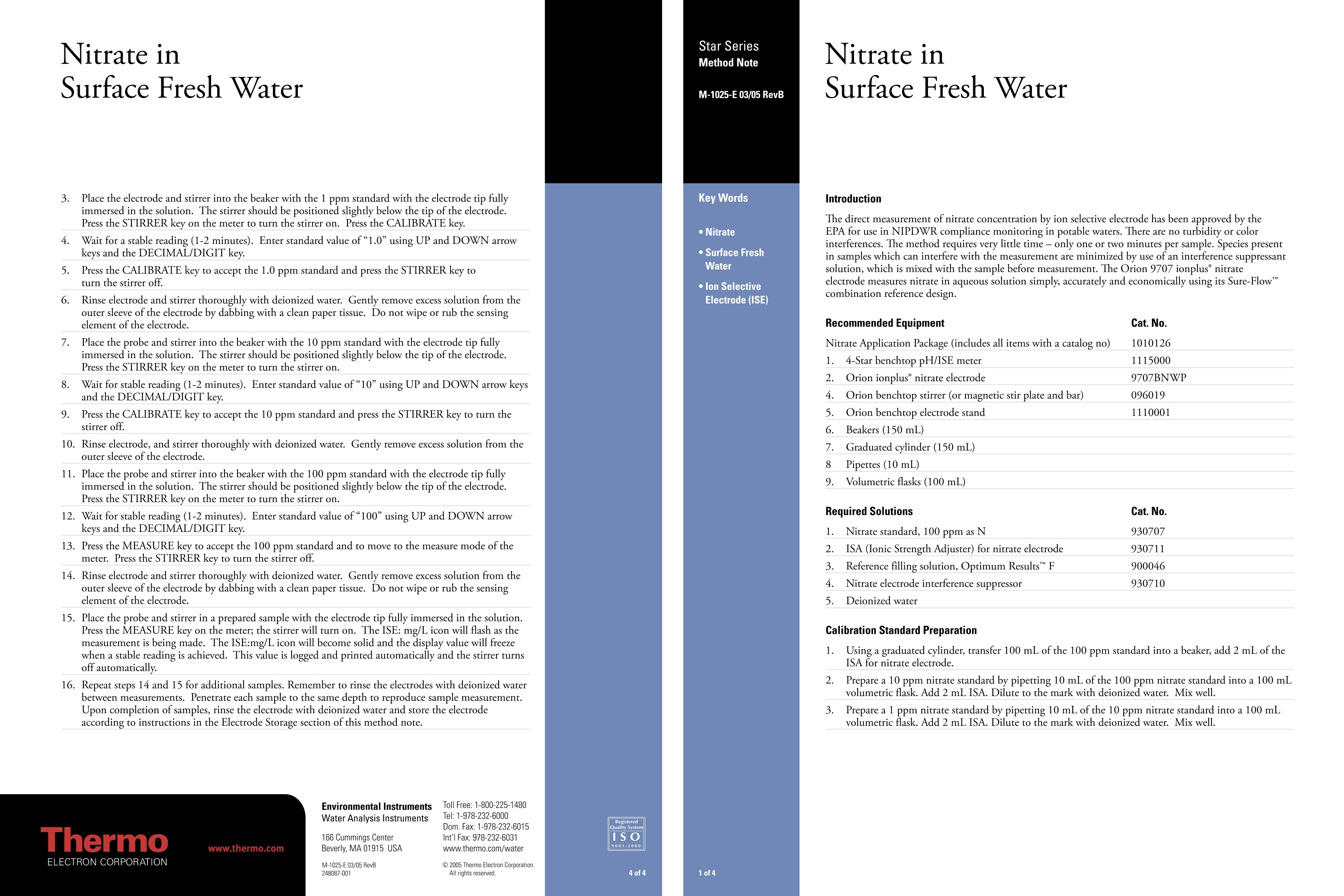
-
2/2

产品配置单
赛默飞世尔科技在线水质分析仪器为您提供《环境水中营养盐检测方案 》,该方案主要用于环境水(除海水)中营养盐检测,参考标准《暂无》,《环境水中营养盐检测方案 》用到的仪器有台式pH/ORP/ISE/溶解氧/电导率测量仪、Orion 4-Star台式(便携式)pH/离子浓度测量仪。
我要纠错
推荐专场
水质分析仪/多参数水质分析仪
更多相关方案


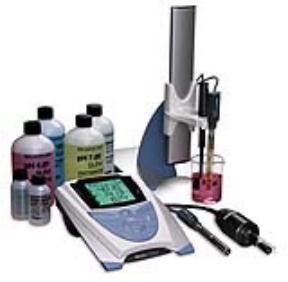
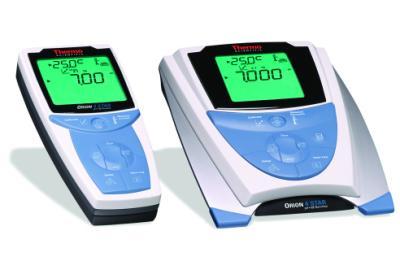
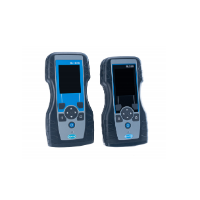
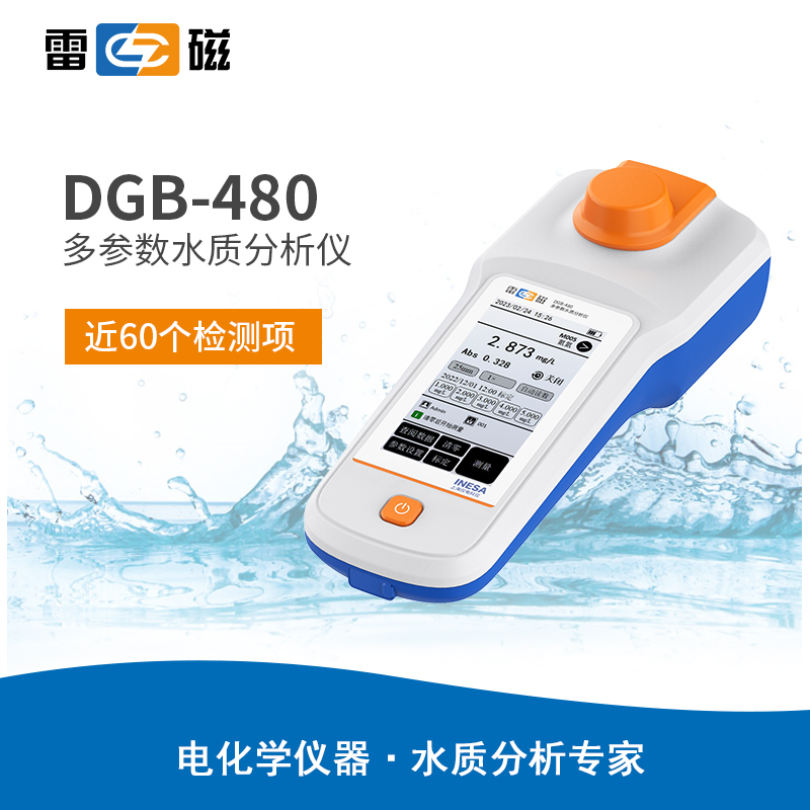
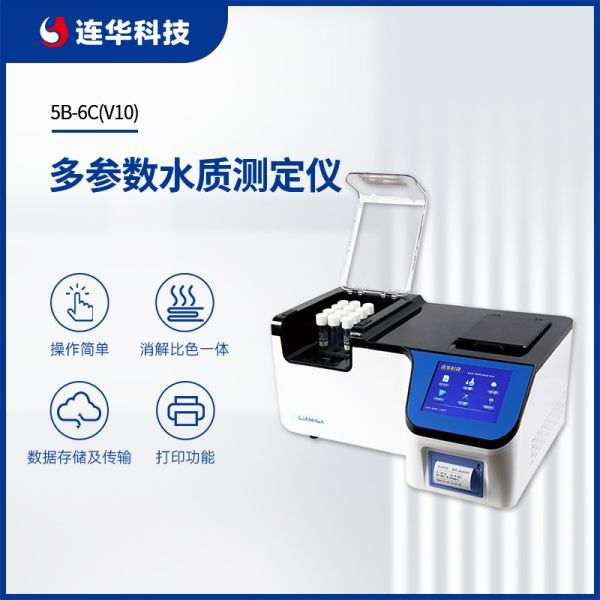
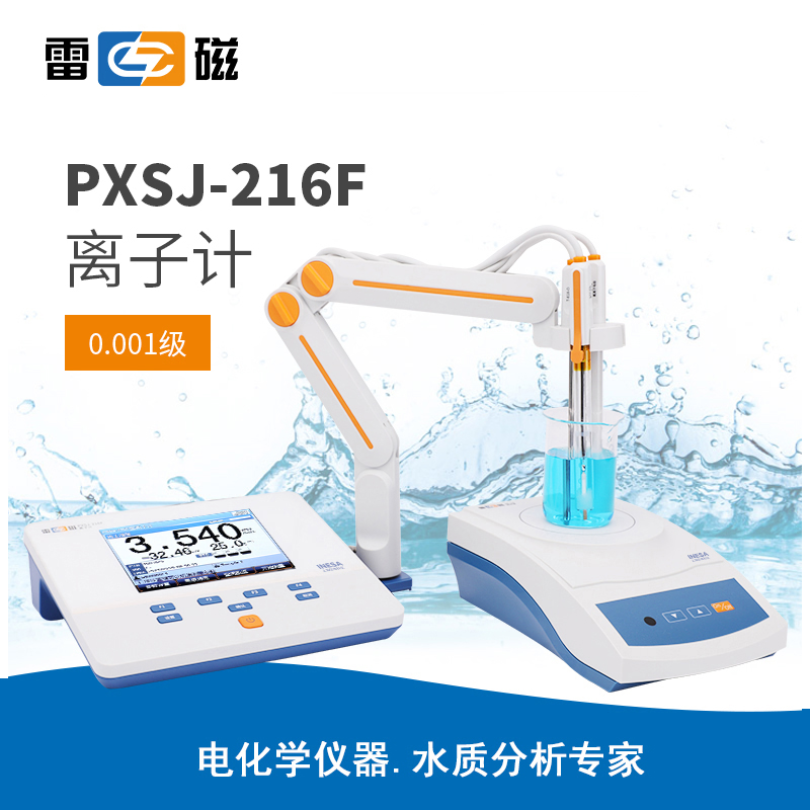
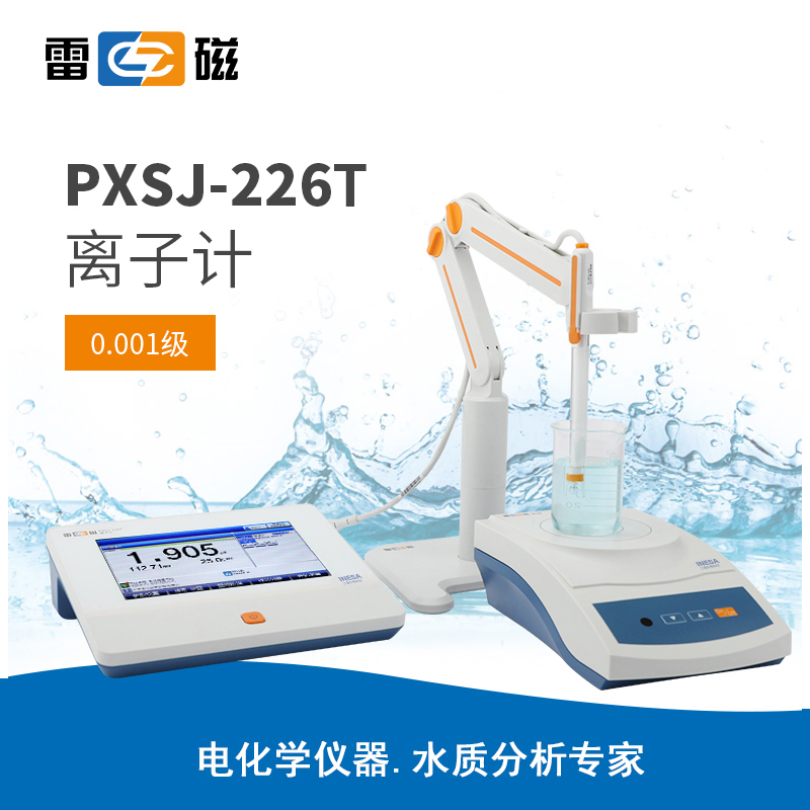
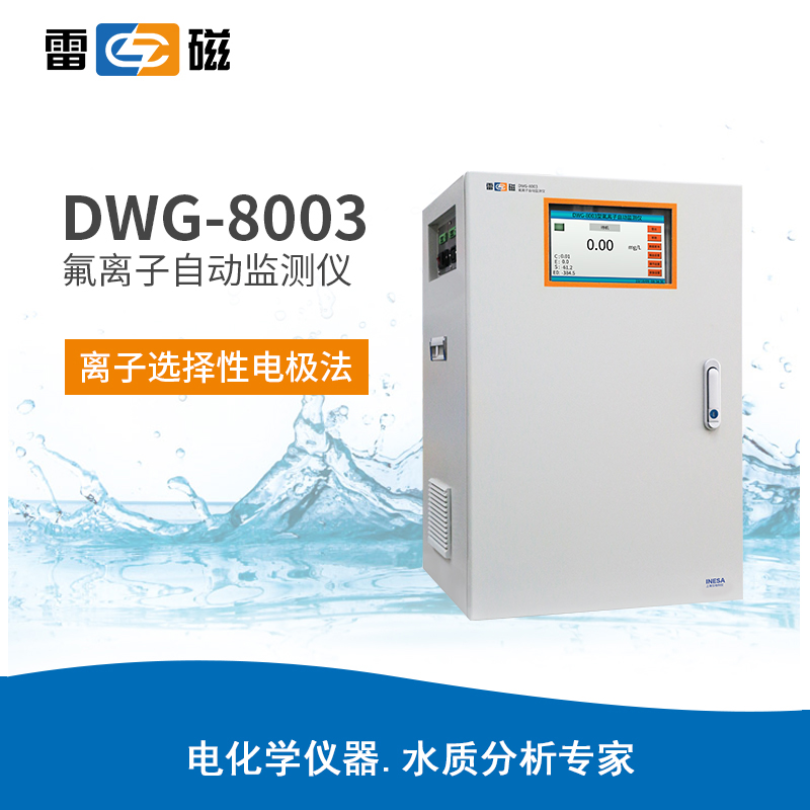
 咨询
咨询
